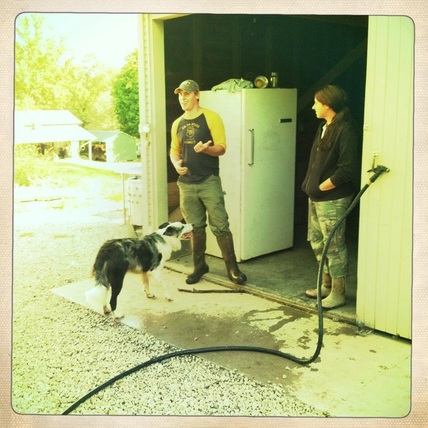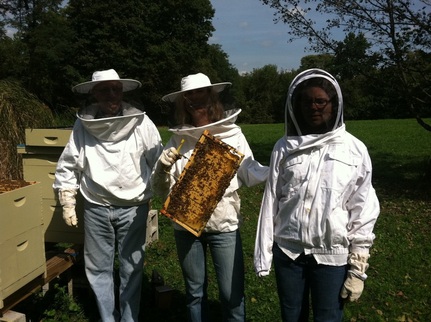
The Initiative reestablishes old farmsteads once operated in the Cuyahoga Valley National Park. Farm houses are restored and land is prepared in anticipation of its new caretakers who lease the property and agree to farm it. Since the programs conception in 1999, one to two farms have come available each year. Applicants must demonstrate not only their financial commitment but their commitment to environmental stewardship. While not expected to be certified organic, every farm is expected to follow sustainable farming practices. At a time when farmland is being lost to development; people are looking to green their careers and get into farming; and communities are seeking local food sources, the Countryside Initiative is a program right for the times. Currently, it is the only lease-to-farm program operating in National Parks. The model, however, can be adapted by any land trust, municipality, land grant or landowner.
Jeff Brunty is a growing breed of "greenhorns" - passionate, young people finding a career and future in farming. He got his start with seven chickens ten years ago raising them in his great, great grandfather's barn. He managed the growing chicken business on the side till 2008 when he learned about the Countryside Initiative. He and his girlfriend, Melanie, applied and were accepted. Just four years out of high school and he was running his own farm. Melanie had a degree in international business but chose rubber boots over high heels to help make Brunty Farms a reality. She works the 2-acre vegetable garden and Jeff raises the chickens, lambs, ducks, turkeys and pigs. Together they make a dynamic team farming 17-acres servicing a 100-person CSA, one farmer's market and a robust farm stand.
They keep 350 egg-laying hens and raise 9,000 meat chickens annually (broilers). They process all their own broilers on-site making it the largest private operation in the state of Ohio with plans to expand to 20,000 over the next year. And that's just the chicken's. They raise 400 Broad-Breasted White Turkey's for the holidays as well. These poultry 'without borders' enjoy a plentiful supply of pasture foraging for bugs and eating grass. During our visit, brush piles smoldered in the fields where the turkeys roamed. They are a form of pest control for the turkeys. Watch this video to find out why, click here. The coolest fact of the day...was learning the difference between white eggs and brown eggs. White eggs actually come from white chickens. They are often used in conventional chicken operations because they are small and more can be crammed into a cage. But when allowed to forage, they will eat 40% of their diet on pasture requiring less feed. Brown eggs give the appearance of being more farmy and wholesome but actually these birds are a bit lazy and eat less than 20% of their diet on pasture thus eating more feed. Not only are the brown eggs more expense to raise but without a more natural diet aren't as nutritious as the white eggs. Go figure! Brunty has both white egg-laying hens and brown egg-laying hens, White Leghorns and Rhode Island Reds, respectively.
The highlight on any farm tour, for me at least, are the pigs. They are such showmen. Pigs have BIG personality!The Brunty pigs were no different rooting and trotting around their lavish 3-4 acre marshy estate with floppy ears. Watch this video to see them at their piggyness.


 RSS Feed
RSS Feed
